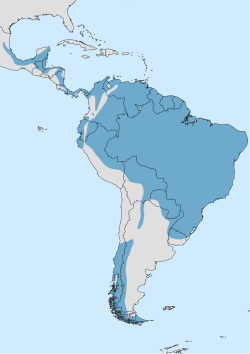| Common name | Scientific name and subspecies | Range | Size and ecology | IUCN status and estimated population |
|---|
| Cooper's hawk  | Astur cooperii
(Bonaparte, 1828) | southern Canada to Mexico
 | Size:
Habitat:
Diet: | LC
|
|---|
| Gundlach's hawk  | Astur gundlachi
(Lawrence, 1860)
- A. g. gundlachi - (Lawrence, 1860)
- A. g. wileyi - (Wotzkow, 1991)
| Cuba.
 | Size:
Habitat:
Diet: | EN
|
|---|
| Bicolored hawk  | Astur bicolor
(, )
- A. b. bicolor - (Vieillot, 1817)
- A. b. fidens - (Bangs & Noble, 1918)
- A. b. guttifer - (Hellmayr, 1917)
- A. b. pileatus - (Temminck, 1823)
| Mexico to west Ecuador, the Guianas to Colombia, south to east Peru, through Amazonian Brazil to Paraguay, north-northwestern Argentina,north of Uruguay,Bolivia and to Chile
 | Size:
Habitat:
Diet: | LC
|
|---|
| Chilean hawk  | Astur chilensis
(Philippi & Landbeck, 1864) | central Chile and western Argentina south to Tierra del Fuego,
 | Size:
Habitat:
Diet: |
|
|---|
| Black sparrowhawk  | Astur melanoleucus
(Smith, A, 1830)
- A. m. temminckii - Hartlaub, 1855
- A. m. melanoleucus - (Smith, A, 1830)
| coastal regions of South Africa, including the Cape Peninsula
 | Size:
Habitat:
Diet: | LC
|
|---|
| Henst's goshawk  | Astur henstii
(Schlegel, 1873) | Madagascar | Size:
Habitat:
Diet: | VU
|
|---|
| Eurasian goshawk  | Astur gentilis
(Linnaeus, 1758)
- A. g. albidus
- A. g. arrigonii
- A. g. buteoides
- A. g. fujiyamae
- A. g. gentilis
- A. g. marginatus
- A. g. schvedowi
| western Europe (e.g. Great Britain, Spain, France)
 | Size:
Habitat:
Diet: | LC
|
|---|
| American goshawk
| Astur atricapillus
(Wilson, A, 1812)
- A. a. apache
- A. a. atricapillus
- A. a. laingi
| western United States, including Alaska, and western Canada.
 | Size:
Habitat:
Diet: | LC
|
|---|
| Meyer's goshawk
| Astur meyerianus
(Sharpe, 1878) | Moluccas, New Guinea, the Bismarck Archipelago and the Solomon Islands. | Size:
Habitat:
Diet: | LC
|
|---|
















